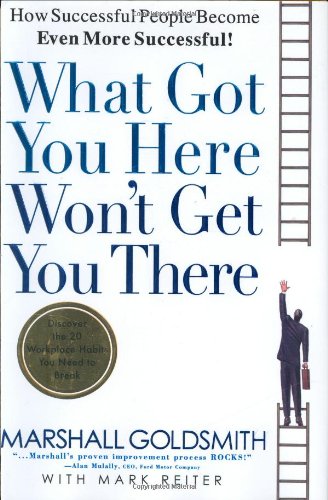If you know your enemies and know yourself, you will not be imperiled in a hundred battles…
If you do not know your enemies nor yourself, you will be imperiled in every single battle…
Sun Tzu (c. 6th century BCE) Chinese general,military strategist, and author of The Art of War
There are a lot of great lists available for the enemies of innovation because there are a lot of hurdles and trip points that will limit the ability to innovate.
Sometimes those limitations are self-imposed. Because of that, the following enemies of innovation list are the ones we ourselves own. They are outside the corporate culture, bureaucracy and financial concerns that frequently present challenges, yet they are equally as important. We also have the ability to control them. For that reason alone, they deserve our attention to identify and eliminate them.
1. Fear
A year ago, a blog post at the Harvard Business Review took a look at the role of fear in curtailing innovation. The top fears included:
- Fear of making a mistake
- Fear of getting fired
- Fear of conflict with a manager
- Fear of speaking in front of a group
- Fear of disagreements with co-workers
The article concluded, employees who feel supported and appreciated will be more risk tolerant and more willing to devote energy, creativity and passion to company goals and innovate within their area of influence.
Our ability to control these fears can start with making healthier decisions, which can go a long way to reducing general stress and anxiety – making us less fearful. Exercise more, sleep more and meditate more. Use less caffeine, less alcohol and even work less.
2. Ego
 If we’re in control of our fear, we still have to look out for our ego. The way we interact with others can affect their willingness to share their thoughts and ideas. Create an open environment and you open the gate of shared insights and observations. Shut down the willingness to share and we cut off the flow of new ideas from those that surround us.
If we’re in control of our fear, we still have to look out for our ego. The way we interact with others can affect their willingness to share their thoughts and ideas. Create an open environment and you open the gate of shared insights and observations. Shut down the willingness to share and we cut off the flow of new ideas from those that surround us.
Reading “What Got You Here, Won’t Get You There” by Marshall Goldsmith provides useful guidance in what habit may be impeding us and how to overcome them. I culled his list of 20 Habits that Hold You Back to the Four Habits that Shut Others Down. If you practice these four traits, you’re an inadvertent killer of innovation.
- Adding too much value, the overwhelming desire to add our two cents to every discussion.
- Starting with No, But or However. The overuse of these negative qualifiers which secretly say to everyone, “I’m right, you’re wrong.”
- Negativity or “Let me explain why that won’t work.” The need to share our negative thought even when we weren’t asked.
- Refusing to express regret: The inability to take responsibility for our actions, admit we’re wrong, or recognize how our actions affect others.
3. Busyness
We are so busy working on our day job we don’t have time for innovation. Instead, we focus on short-term objectives. Not wanting distractions, there’s no space in our schedule for exploration, brainstorms, looking outside the organization or experimentation. These points were discussed in Innovation Excellence earlier this year.
 Even companies that encourage employee exploration struggle with busyness. Google’s hallowed “20% Time” is in jeopardy as a result of stack ranking (ranking employees by various metrics and fixing/firing the bottom 20%). Policies of measurement like this don’t lead to intangibles like incubating new initiatives or products. They create a focus on performance measurements.
Even companies that encourage employee exploration struggle with busyness. Google’s hallowed “20% Time” is in jeopardy as a result of stack ranking (ranking employees by various metrics and fixing/firing the bottom 20%). Policies of measurement like this don’t lead to intangibles like incubating new initiatives or products. They create a focus on performance measurements.
Finding time to explore is vital to innovation as well as our own well-being. Animation producer Don Jurwich once told me how he values the technical skills of fine artists and looks for artists with broad interests. It’s easier to take someone with the proper technical skills and teach them to draw funny, versus trying to get a comic artist to employ the technical skills to make something visually correct. The more we’ve experienced, the more we can draw upon to come up with a fresh idea or approach.
What works in animation, works in less creative environments. Solid technical skills with a broad range of experience and interests are a powerful combination.
4. Past Success
The past is where we’re all comfortable – we’ve all been there. It seems to make sense that ideas that worked once, should work again (there’s another blog post in this statement, I’m sure). We also get caught in the reverse thinking: if it didn’t work in the past, it won’t work in the future – and that’s just not the way it is. Everything changes. Some ideas are worth trying again.
I know I’m guilty of this. I’ve seen enough technology and run enough tests I feel I know what works and what doesn’t – and therefore I can predict what a good idea is. That’s laughable.
The future makes a lot of people uncomfortable, but the reality is the future is the only place our product needs to succeed. The past is not the market where innovations succeed, so it makes little sense to continue to look there for evidence that they will succeed in the future.
Trying to assess what the world might want in the future by conducting rear-facing market research will kill any new idea at source. As Henry Ford said, “If I’d asked what people wanted, they would have said ‘a faster horse’.”
What are the your own blockers that keep you from being more innovative? Share your thoughts in the comments below.

